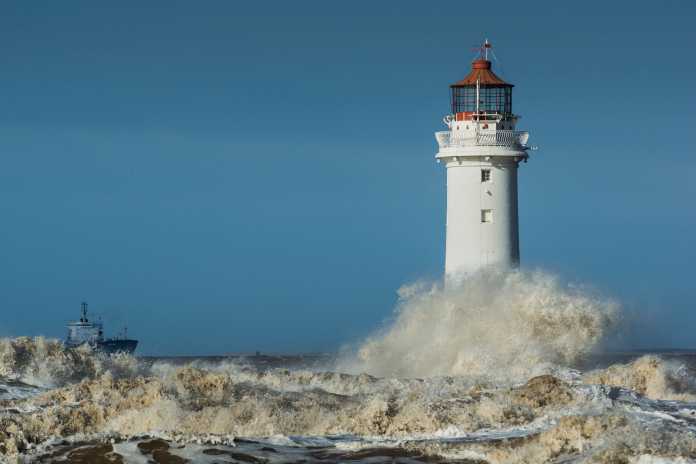A Google news search for the term “climate change” today revealed a post by WCVB5, Boston’s ABC affiliate, claiming lighthouses along the U.S. east coast are being threatened with destruction from rising seas caused by climate change. Rising seas may threaten some lighthouses, but data indicates climate change is not to blame.
In the story, titled “Rising sea levels, climate change putting beloved New England lighthouses at risk,” meteorologist Mike Wankum, links climate change, rising sea levels, and the threat the latter pose to some New England lighthouses.
“Lighthouses are beloved beacons of New England’s rugged coast built to protect vessels approaching our rocky shoreline,” writes Wankum. “But historic lighthouses now are in danger as sea levels rise steadily — a result of our changing climate.”
Wankum notes that while many lighthouses lie atop peninsulas or jetties jutting out from the coast, others reside on barrier islands of various sizes, other don’t even have an island beneath them but rather were built upon a solid granite shelf jutting out from the sea. Many of these lighthouses, Wankum reports, have become eroded by storms, tides, massive waves, and rising seas over time, which he implies is due to climate change enhancing storms and contributing to sea level rise.
Wankum presents no evidence for his claims, and the evidence that does exist refutes the idea that climate change is causing worsening storms or greater sea level rise.
The closest the WCVB article comes to citing data is when Wankum notes that the National Oceanic and Atmospheric Administration (NOAA) global sea levels have risen on average eight inches over the past 100 years. Wankum leaves out context. Global sea level has risen approximately 400 feet since the beginning of the end of the most recent ice age between 20,000 and 12,000 years ago. The eight inch rise is much lower than the rate of rise over much of the Holocene. The rate of sea level rise has increased and decreased at various times since then, slowing and accelerating on the order of tens, hundreds, and thousands of years over the past 20,000 years. None of that variance had anything to do with human activities. Indeed, as NASA reports, sea level always rises between ice ages as ice sheets retreat. During the last interglacial period between ice ages, seas were four to six meters higher than we are experiencing today.
As explored in Climate Realism here, here, and here, for example, there has been no increase in the rate of rise over the past 30 years, but rather the purported increase is an artifact of poor accounting for switching between satellite data records.
Indeed, Climate Realism and Climate at a Glance: Sea Level Rise have repeatedly debunked claims that climate change enhanced sea level rise is threatening locations up and down the Eastern Seaboard, for instance, Maine, Massachusetts, Delaware, New Jersey, Maryland, Virginia, North Carolina, and Florida.
In short, the rate of rise in sea levels hasn’t definitively increased during the period of modern, modest warming, so it can’t be increasing the threat to coastal lighthouses.
Concerning storms, data from NOAA and the Intergovernmental Panel on Climate Change show no increase in the number or intensity of hurricanes striking the United States. If global warming isn’t causing a worsening of storms striking the U.S. East Coast, it also cannot be causing an unnatural amount of erosion to lighthouses from those storms.
The fact that some lighthouses have, overtime, become so threatened by erosion and rising seas that, to preserve them they must be moved, is unfortunate but not surprising. Any structure located in the path of continual wave action and repeated hurricane force winds would naturally be expected to erode overtime. Seas rise during interglacial periods and will continue to do so during the present interglacial until the next ice age comes. Rather than jumping on the “climate crisis” bandwagon, WCVB, as a news organization, should present the facts: there is limited or no hard data indicating human influences on climate are exacerbating the threats nature poses to lighthouses.
















